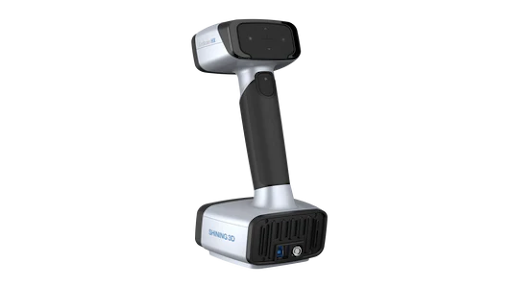In the realm of modern technology, 3D scanners have emerged as indispensable tools for various industries, from engineering and manufacturing to healthcare and art. These devices allow users to capture real-world objects and environments in three dimensions, paving the way for advanced modelling, prototyping, and analysis. However, with a plethora of scanner options available in the market, choosing the right one for your specific needs can be a daunting task. This comprehensive buyer’s guide aims to simplify the selection process and help you find the perfect 3D scanner for your requirements.
Understanding Different Types of 3D Scanners
Before diving into the buying process, it’s crucial to understand the various types available:
1. Structured Light Scanners: These scanners project light patterns onto the object being scanned and use the distortion of these patterns to create a 3D model.
2. Laser Scanners: Laser-based scanners utilize laser beams to measure the distance to an object’s surface, capturing precise geometric data.
3. Photogrammetry Systems: These systems use multiple cameras to capture images of an object from different angles, allowing for the creation of a 3D model through image analysis.
4. Contact Scanners: Contact-based 3D scanners physically touch the object to capture data, making them suitable for capturing intricate details and small objects.
Aspects to Consider When Choosing a 3D Scanner
Accuracy and Resolution
The level of accuracy and resolution required depends on your intended applications. Opt for 3D scanners with superior accuracy and resolution capabilities for high-precision applications such as engineering or medical imaging.
Scanning Speed
Consider the scanning speed of the 3D scanner if you need to process large volumes of data quickly. Some scanners offer rapid scanning capabilities, while others may take longer to capture detailed information.
Size and Portability
If you require a portable solution for on-site scanning or fieldwork, choose a compact and lightweight 3D scanner that offers ease of mobility without compromising performance.
Software Compatibility
Ensure the 3D scanner is compatible with the software applications you intend to use for data processing, analysis, and modelling. Compatibility issues can hinder workflow efficiency.
Cost and Budget
Consider your budget, the 3D scanner price, and the overall cost of ownership, including maintenance, training, and software licenses. While higher-priced 3D scanners may offer advanced features, there are also budget-friendly options with sufficient capabilities for many applications.
Industry-Specific Requirements
Different industries may have unique 3D scanning requirements. For example, the healthcare industry may require scanners to capture medical-grade images, while the art and design sector may prioritize colour-capture capabilities.
Top Considerations for Specific Industries
1. Engineering and Manufacturing
For engineering and manufacturing applications, prioritize 3D scanners with high accuracy, resolution, and scanning speed. Look for scanners that can capture complex geometries, fine details, and surface textures with precision.
2. Healthcare and Medical Imaging
In the healthcare sector, choose 3D scanners that are capable of capturing medical-grade images for applications such as patient scanning, prosthetics, and orthodontics. Consider scanners with colour capture capabilities for enhanced visualization.
3. Art and Design
For artistic and design purposes, opt for 3D scanners that can capture colour information and intricate details accurately. Look for scanners that offer compatibility with design software for seamless integration into your creative workflow.
Evaluating 3D Scanner Specifications and Features
When comparing 3D scanners, pay attention to the following specifications and features:
- Scan volume and depth
- Accuracy and resolution
- Scanning speed
- Software compatibility
- Portability and ease of use
- Colour capture capabilities
- Connectivity options (USB, Wi-Fi, etc.)
- Support and warranty
Conclusion
Choosing the right 3D scanner requires careful consideration of your specific needs, budget, and industry requirements. By understanding the different types of 3D scanners, evaluating key factors such as accuracy, scanning speed, and software compatibility, and considering industry-specific considerations, you can make an informed decision that meets your scanning objectives. Whether you’re a small business, a professional designer, or a healthcare provider, finding the perfect 3D scanner will empower you to unlock new possibilities in modelling, prototyping, and visualization.

